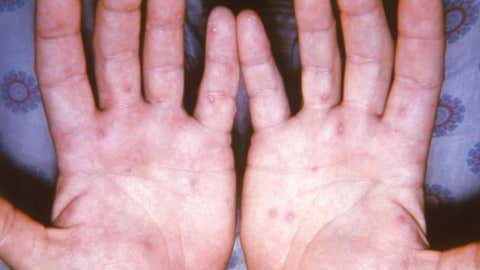Infection
All About Clade 9 VZV — The New Chickenpox Variant Circulating in India

Rashes caused by Chickenpox infection.
(CDC/ K.L. Herrmann/PHIL)
India is currently witnessing multiple health crises unfold all at once: on one hand, there are fears of the Nipah virus’ resurgence in Kerala, on the other daily COVID-19 cases are almost touching a hundred after months. Further, there has also been a nationwide surge in mosquito-borne illnesses like dengue and malaria.
In the middle of all this chaos, the Indian Council of Medical Research (ICMR) and National Institute of Virology (NIV) in Pune have detected another problematic viral variant circulating in the country: a Clade 9 variant of chickenpox-causing varicella-zoster virus (VZV).
Moreover, its detection also raises questions about its differences and similarities with the previously-known variants in India, and its potential impact, especially on vulnerable populations.
Below we answer all the frequently asked questions about the varicella zoster virus and its recently found variant.
What is chickenpox? What are the origins of the new variant Clade 9 VZV?
Chickenpox is a common childhood illness that is caused by the varicella-zoster virus (VZV). In adults, this virus is known to cause shingles.
So far, its Clade 9 strain was known to be the most common variant in circulation in countries like Germany, the UK and the US. However, in a new study, scientists detected the Clade 9 strain for the first time in India, besides the previously known Clade 1 and Clade 5 variants,
A clade simply refers to the group or subtype arising from a common ancestor.
What are the symptoms of Clade 9 VZV?
The symptoms of Clade 9 VZV infection are similar to regular chickenpox. It is characterised by itchy rashes which progressively turn into blisters and then fall off as scabs. Other symptoms include fever, tiredness and loss of appetite, headache, and fatigue.
Usually, the symptoms appear within 2-3 weeks of viral infection. However, in this variant, the evolution of rashes occurs more rapidly.
Is it more dangerous than other known strains?
Despite Clade 9 VZV being a new variant for India, there were no significant indications of heightened disease severity in patients compared to regular chickenpox, said study author and NIV scientist Dr Pragya Yadav.
However, its detection highlights the importance of monitoring and genomic surveillance infections across the country to identify potential threats well in advance.
Is there a treatment for this new chickenpox variant?
There is no difference between the treatment protocol for the new variant. The treatment primarily involves relieving symptoms and discomfort. Over-the-counter medications, soothing baths, and staying hydrated can help with healing.
However, in severe cases and complications, such as involvement of the central nervous system, one must seek immediate medical attention.
How to prevent a varicella-zoster infection?
The first line of defence against chickenpox is ensuring vaccination for children as advised by a medical practitioner or the immunisation guidelines.
However, breakthrough infections can sometimes occur after vaccination, albeit with milder symptoms. Therefore, practising good hygiene, such as regular handwashing, can help reduce the risk of infection.
According to the Centres for Disease Control and Prevention (CDC), chickenpox is considered contagious 1 to 2 days before rash onset until scab formation, so one should avoid close contact with patients as long as infectivity lasts.
(With inputs from TOI)
**
For weather, science, space, and COVID-19 updates on the go, download The Weather Channel App (on Android and iOS store). It’s free!

